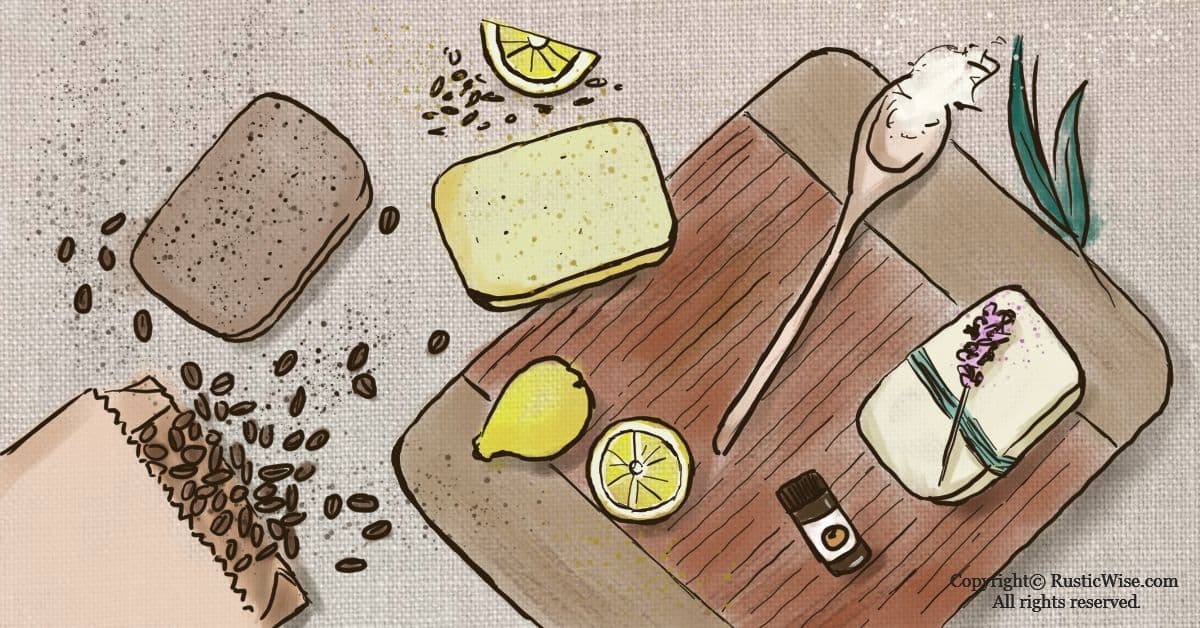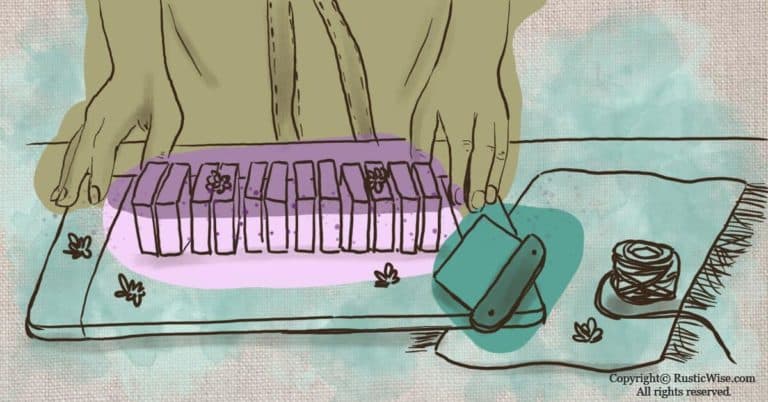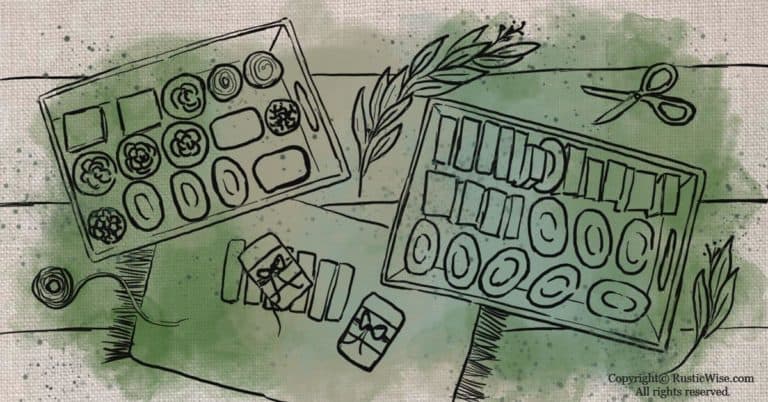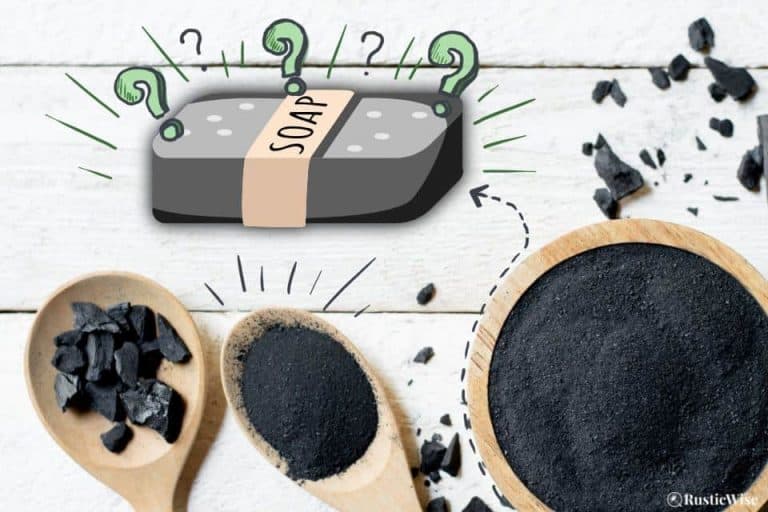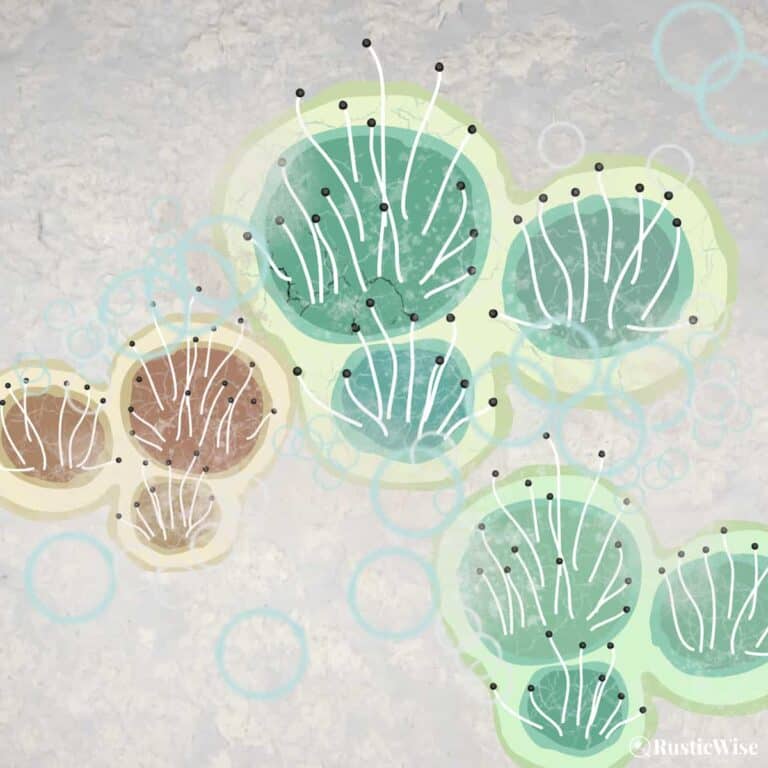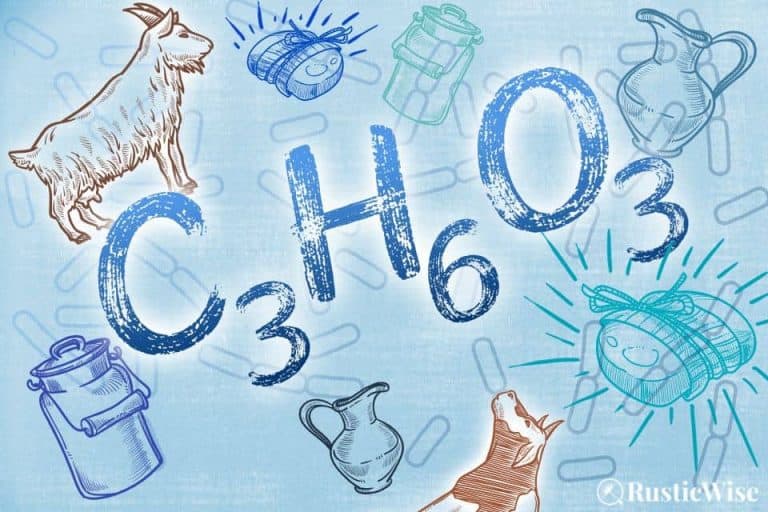DIY Kitchen Hand Soap Recipe: 3 Fresh Variations
Working in the kitchen is hard on your hands. Peeling, chopping, kneading, and washing dishes all take a toll. And let’s not forget the odors. If you’re a fan of garlic and onions, you know the power of lingering aromas. Here’s where this kitchen hand soap recipe comes in. Make your own natural hand soap bar using the hot process method.
We’ve included a basic hot process soap recipe which you can customize three ways: Coffee Kitchen Soap, Lemon-Baking Soda Kitchen Soap, and a Super-Clean Kitchen Soap which calls for a blend of grease-cutting essential oils.
We know that many people like to use liquid soap in the kitchen. But we’re switching it up with bar soap! All three of these kitchen hand soap recipes have natural exfoliants for extra scrubbing action (coffee, cornmeal, and baking soda).
Treat your hardworking hands to a bar of nourishing DIY hand soap.
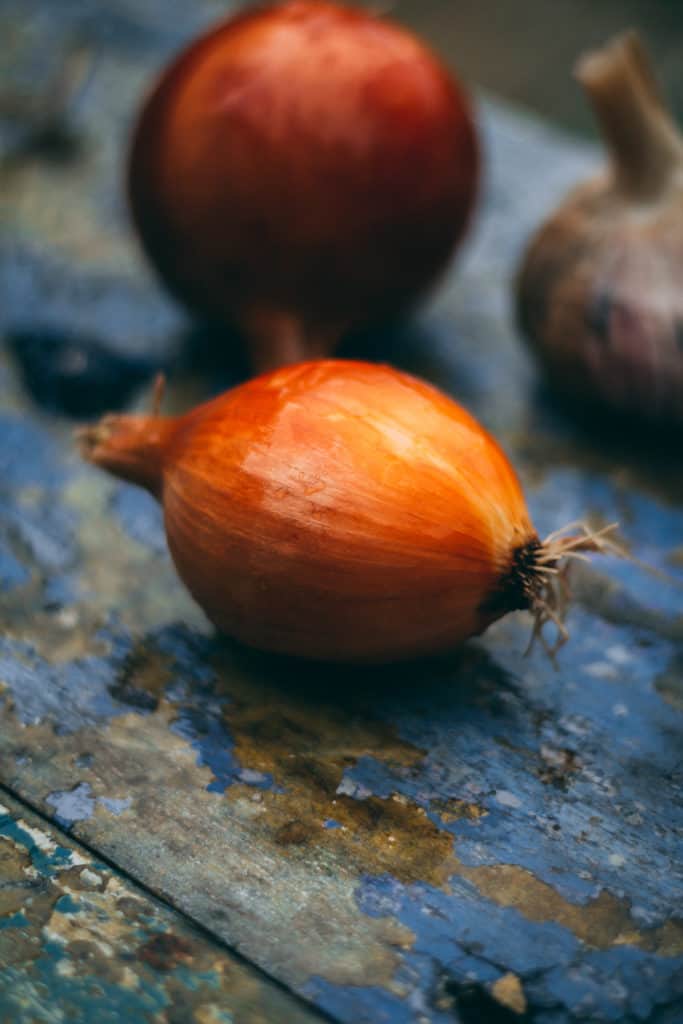
What is hot process soapmaking?
If you’re new to homemade soap, you might be scratching your head at the term “hot process.” The hot process method is one way to make soap from scratch. Yes, you’ll need to handle lye with this method! Hot process gets its name from the fact that heat is applied to the soap mixture until its neutralized. This speeds up the saponification process.
Heating your soap mixture is often done in a slow cooker. If you don’t have a slow cooker, you could also use a 100 percent stainless steel double boiler on your stovetop.
A benefit of hot process soapmaking over cold process is the quicker curing time. With hot process, soap is ready to use once it’s hardened. (Okay, technically you should give it a week or so to cure and harden, but it’s still safe to use right away.)
Since you’ll be handling lye, please ensure you read up on lye safety before you get started!
What you’ll need to get started
Round up a few basic supplies to make hot process soap:
- 3 1/2-quart slow cooker
- Scale
- Immersion (stick) blender
- Silicon spatula
- Lye-safe mixing container
- Safety equipment (goggles, gloves, oven mitt, mask)
- Loaf molds (three 1-pound loaf molds, or something similar)
- Heat-safe glass measuring cup
- Stainless steel or plastic spoons and mixing utensils
- Measuring spoons and cups
- Assortment of bowls for oils
Basic hot process soap recipe
“Basic” isn’t always bad, or boring. We call this a basic hot process soap recipe because it’s reliable and versatile.
We’ll use this recipe as our base soap which you can customize with one (or more) of the three variations down below.
If you want to get into the nitty-gritty details, check out our article on making this basic hot process soap recipe.
This basic hot process soap recipe is adapted from the book “DIY Artisanal Soaps: Make Your Own Custom Handcrafted Soaps!” by Alicia Grosso. We like it because the combination of olive oil, coconut oil, and palm kernel oil produces a solid bar of soap with tons of glycerin.
Basic hot process soap recipe (2-pound batch)
Note: This is a 2-pound batch recipe. The 2-pounds refers to the fact that it uses 2 pounds of oils. The 2-pound recipe actually yields roughly 3 pounds of soap.
Yield: 3 pounds (or around 12, 4-ounce bars)
Cook time: 3 hours
Oils:
- 21.3 ounces olive oil (1.33 pounds)
- 3 ounces palm kernel oil
- 10 ounces coconut oil
Lye mixture:
- 12 ounces water
- 4.5 ounces lye
After trace:
- 1 ounce castor oil (2 tablespoons)
- Optional add-ins (color, essential/fragrance oils, additives)
Here’s a quick overview of the steps:
- Melt olive oil, palm kernel oil, and coconut oil in the slow cooker.
- Prepare your lye solution and put on safety gear. Measure and pour water into a heat and lye-safe container. Slowly add lye. Allow the oils to heat up while the lye solution cools. Add lye mixture to oils when both solutions are roughly 110 degrees Fahrenheit (43 degrees Celsius).
- Stir to trace using immersion blender. Add castor oil.
- Cook on low heat for 3 hours. Check every 30 minutes. Check pH. Cook until soap batter is neutral.
- Prepare loaf mold and pour soap mixture. Allow to harden for 24 hours before unmolding and cutting.
Coffee kitchen hand soap recipe
What is coffee soap good for? In the kitchen, coffee soap is great for neutralizing odors. Pungent garlic and onions are no match for this gently exfoliating coffee soap!
This soap recipe calls for a strong batch of brewed coffee along with some finely ground coffee.
If you’re a coffee lover, you’ll be happy to know that your favorite brew also has beneficial skin properties too:
- Fights inflammation
- Antibacterial properties
- Rich source of vitamin B3 (niacin)
- Full of antioxidants
Tips: When brewing your coffee, used distilled water. Stick with using used coffee grounds as they hold up better in the soap. The stronger your batch of coffee, the darker your soap will be.
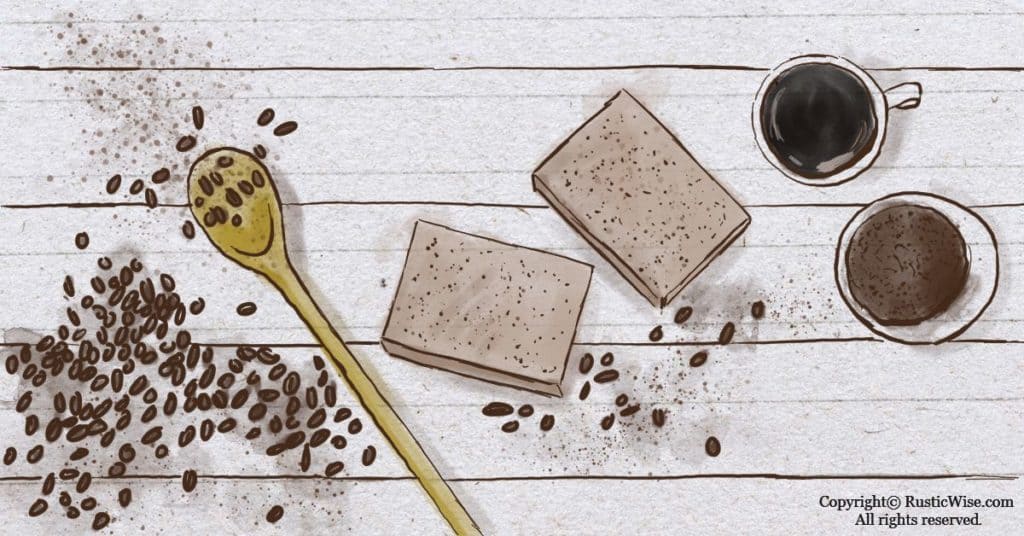
Coffee kitchen soap recipe
Yields: 3 pounds (or around 12, 4-ounce bars)
Cook time: 3 hours
- Use 2-pound batch recipe (see above, or see our basic hot process soap recipe for more details).
- Substitute coffee for water in the soap recipe (12 ounces)
- 2 tablespoons finely ground coffee
- Brew a batch of strong coffee. Remember to use distilled water when making your coffee as you’ll be substituting coffee for the water content.
- Follow the directions of your 2-pound batch recipe. Stir to medium trace.
- Cook the soap batter in a slow cooker on low for about 3 hours. Check your soap mixture every 30 minutes. Check the pH and cook until neutral.
- Add finely ground coffee and stir well.
- Prepare loaf mold and pour soap mixture. Allow to harden for 24 hours before unmolding and cutting.
Enjoy your new coffee soap in the kitchen! Use it to remove any unwanted odors from your hands.
Lemon-baking soda kitchen hand soap recipe
Lemon is a powerhouse in the kitchen—great for freshening and deodorizing. Lemon zest also adds a lovely splash of citrus scent. Combine lemon with baking soda, a natural abrasive, and you’ve got yourself a double-whammy in the cleaning department.
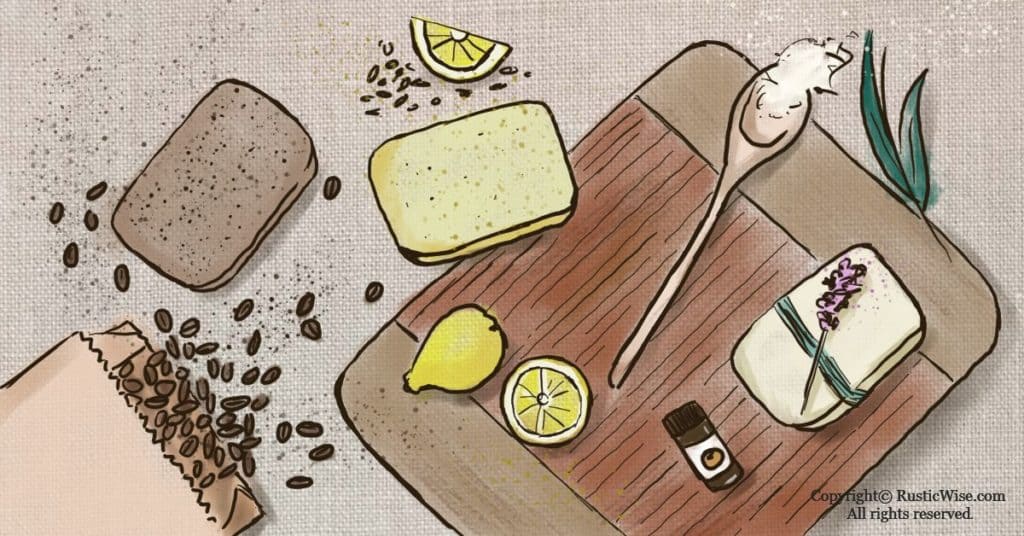
Lemon-baking soda kitchen soap recipe
Yields: 3 pounds (or around 12, 4-ounce bars)
Cook time: 3 hours
- Use 2-pound batch recipe (see above, or see our basic hot process soap recipe for more details).
- 2 tablespoons lemon zest
- 3 tablespoons baking soda
- Follow the directions of your 2-pound batch recipe. Stir to medium trace.
- Cook the soap batter in a slow cooker on low for about 3 hours. Check your soap mixture every 30 minutes. Check the pH and cook until neutral.
- While the soap batter is heating, prepare the lemon zest. You’ll need about two medium-sized lemons. Use a fine kitchen grater or zester to prepare lemon zest. Ensure you only get the zest (the yellow skin) and not any of the “white” parts. The finer the pieces, the better! Pat dry with a paper towel.
- Once the soap is neutral, add lemon zest and baking soda. Stir to incorporate.
- Prepare loaf mold and pour soap mixture. Allow to harden for 24 hours before unmolding and cutting.
Note: The lemon zest adds a nice citrusy scent to your homemade bar of kitchen soap. It shouldn’t turn brown. At worst, it might look slightly orange. But, if everything works out, the lemon zest should retain its scent and natural color.
Super-clean kitchen hand soap recipe
There are times when you need some extra oomph in your kitchen hand soap. Say, after you’ve diced dozens of cloves of garlic. Or, your eyes have turned into dripping faucets after chopping onions. Or your hands are just coated in grease after…who knows what.
This super-clean kitchen soap is designed to cut through the grease. A blend of orange, lavender, and eucalyptus essential oils help do just that. Plus these EOs have antibacterial properties.
Cornmeal helps to add some extra scrubbing power.
- Orange essential oil: A great cleanser, orange essential oil also adds warming and uplifting properties.
- Lavender essential oil: Adds a soothing and calming touch in soaps.
- Eucalyptus essential oil: Great at removing oiliness and adds a stimulating scent.

Super-clean kitchen soap recipe
Yields: 3 pounds (or around 12, 4-ounce bars)
Cook time: 3 hours
- Use 2-pound batch recipe (see above, or see our basic hot process soap recipe for more details).
- 2 tablespoons yellow cornmeal
- 1/2 teaspoon orange essential oil
- 1/2 teaspoon eucalyptus essential oil
- 1/2 teaspoon lavender essential oil
- Follow the directions of your 2-pound batch recipe. Stir to medium trace.
- Cook the soap batter in a slow cooker on low for about 3 hours. Check your soap mixture every 30 minutes. Check the pH and cook until neutral.
- Add yellow cornmeal once soap is neutralized. Stir to incorporate. Add orange, eucalyptus, and lavender essential oils. Stir well.
- Prepare loaf mold and pour soap mixture. Allow to harden for 24 hours before unmolding and cutting.
Kitchen chores, baking, and cooking just got a lot better now that you have this super-clean bar of kitchen soap awaiting your hands.

Author: Theresa Tesolin
Theresa is co-founder of RusticWise. She helps people unleash their inner DIY spirit by encouraging them to get dirty and make or grow something from scratch.

